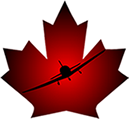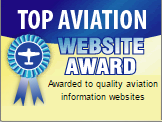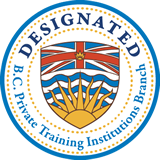 |
|
Pilot Behaviour“An expert is someone who has succeeded in making decisions and judgements simpler through knowing what to pay attention to and what to ignore.” -Edward de Bono- Piloting an aircraft requires the application of human behaviours to achieve a goal: safe and efficient flight. We can think of piloting behaviours as falling into three, basic categories or behaviour sets: skill-based behaviours, rules-based behaviours and knowledge-based behaviours (1). Each of these behaviour sets encompasses both strengths and weaknesses. Developing an understanding of and appreciation for the strengths and weaknesses of each set of behaviours can assist in providing a strong basis for informed decision making when operating an aircraft. Skill-based behaviours are most often the first type of behaviours encountered when a pilot-to-be begins his or her training. Coordination of rudder and aileron, use of pitch and power to maintain altitude and airspeed or rate of decent or climb and maintaining correct visual references during a manoeuvre are all examples of skill-based behaviours. In order to successfully fly an aircraft a candidate for a pilot licence must develop, internalize and be able to demonstrate basic, required skills. Particularly during the early stages of training and, perhaps, as an ongoing commitment to maintaining or developing proficiency, skill-based behaviours are a significant focus for pilots. Developing at least basic proficiency in the necessary skills is both necessary and important in order to fly an aircraft. As skills are developed and internalized, they require less and less conscious thought; they tend to become increasingly automatic, to habituate. As our skills progress we find we can apply carburetor heat, reduce power, adjust prop settings, set flaps, turn from downwind to base, talk on the radio and still have enough consciousness left over to wonder whether we will be able to land, tie down and make it home in time to watch the game on TV. The more we practice a particular skill the more deeply habituated it becomes, making it increasingly difficult to change the particular pattern of movements and perceptions required to perform that skill. This is why re-learning a skill improperly taught or learned initially is so very challenging. Once a pattern has become habituated, reversing the process is a steep, uphill battle. This is both the strength and weakness of skill-based behaviours. A skill is simply a learned level of proficiency at performing a given task. It’s like being very good at cutting with a knife. We can expertly cut vegetables for dinner or slice off a finger. The skill is the same. A decision must be made when and where to apply a particular skill. The fact that skills-based behaviours do tend to become habituated and automatic may lead us into precisely applying the wrong skill for current conditions. We could perform a perfectly executed turn into a hillside, for example. A very skilled pilot is not necessarily a safe or efficient pilot. Piloting an aircraft requires more than skills, regardless of how finely honed those skills may be. Stress, fatigue, preoccupation or a new and unfamiliar environment can sufficiently distract a pilot from applying the correct skill for a particular situation. More than one retractable gear aircraft has landed gear up, not because there is a lack of skill on the part of the pilot but because there was a failure to apply the correct skills at the correct moment. Not too long ago the pilots of a commuter jet executed a skilful takeoff procedure on the wrong runway only to discover the runway was too short to achieve sufficient altitude to avoid encountering the disaster waiting ahead. How many times have you driven home after work only to realize you have no recollection at all of the ride? You were operating on automatic; you were applying habituated skills with little or no conscious thought. Relying on skill alone without the appropriate framework for judgements to guide those skills can be extremely hazardous. Allowing finely honed skills to become the sole basis of our flying practice can set the stage for extremely poor outcomes. Rules-based behaviours are behaviours for which a routine or procedure has been developed and learned by the pilot. The use of checklists or Standard Operating Procedures (SOP’s) are excellent examples of rules-based behaviours. A focus on rules based behaviours allows even moderately skilled pilots to operate aircraft both safely and efficiently in most situations and environments. Rules-based behaviours are not necessarily behaviours that must be memorized or internalized as are skills-based behaviours; they are behaviours whose “rules” or “procedures” are memorized. For example, what the pilot must know regarding the activities for dealing with a pre-flight inspection, the pre-takeoff procedures or an engine fire in flight is that he or she must make use of a standardized checklist or procedure. The key focus of rules-based behaviours is the focus on standardized procedures: red light number 3 on: switch 4 to position 3. Rules-based behaviours provide a tried and true framework for the application of skills. They are typically based on long developed and tested knowledge and experience. The history of errors and successes resulting from years and years of experience form the basis for procedures designed to prevent future errors and guide future successes. As the saying goes, “You never live long enough to make all the mistakes yourself so learn from the mistakes of others.” Rules-based behaviours are strongly emphasized in commercial operations and pilot training for excellent reasons. When flying in a multi-crew environment, for example, unless standardized procedures are established and followed, chaos would soon result. What actions are taken, the order in which they are accomplished and even the communications between crew members are all highly structured and standardized. This assists greatly in assuring an efficient and safe flight. The potential weakness when operating under a rules-based behaviour system occurs when there is an initial misdiagnosis of a problem or situation and the wrong procedure is applied. The successful implementation of rules-based behaviours requires sufficient skill-based behaviours and the required knowledge to know when particular procedures should be applied. The third category of behaviours, knowledge-based behaviours, apply in situations where a decision must be made regarding which, specific rule must be applied or when no specific procedure has been established. We move, here, into the realm of conscious decision making, relying on our own, personal knowledge and experience to deal with particular situations. While knowledge-based solutions may appear to be, in a sense, the highest form of problem solving, these behaviours are subject to a wide range of human errors. Getting creative in a difficult situation can all too often lead to making a situation worse rather than better. More than one light aircraft has gone down when the pilot applied carburetor heat to deal with a faltering engine and then decided because the initial problem appeared to worsen to adjust the carburetor heat back to cold rather than follow the accepted procedure of leaving carburetor heat hot, increasing power and leaning the mixture appropriately until the problem disappears or further diagnosis is indicated. At any given moment we only know what we know; we don’t know what we don’t know. Even the most experienced pilots have limits to the depth and breadth of their knowledge and experience. One of the basic characteristics of human thought is to structure information and make inferences from that structure. This structuring process tends to occur very early in process of assessing a situation. Once we have created a structure for the information we have available, it becomes extremely difficult to change or re-structure the framework we have created. We tend, very quickly, in a problem solving situation, to exclude new information or information that contradicts the structure we have developed in the very early stages of the process. Remember the old saying, “Don’t confuse me with the facts; my mind is already made up”? People all hold a plethora of hopes, fears and wishes. These, as well, tend to colour and format how we process information. It is extremely difficult to remain neutral about information in a difficult problem-solving situation. Even negative information which would indicate a flaw in our structure and assumptions tends to be disregarded or ignored once we have allowed our tendency to seek a solution to gain momentum. I know those clouds will clear and the ceiling will lift as I get closer to home. Stress and distraction only make things worse. Stress is not a performance enhancer. Problems we might easily solve, given time and leisure on the ground, become a breeding ground for disaster in an environment with increasing pressure, limited time and a heightened stress level. It’s often fairly simple, given time, full knowledge and leisure, to analyse the cause or causes of an accident after the fact, but we weren’t sitting in the cockpit just before the event. Relying on knowledge and experience alone puts our eggs in a very fragile basket, even more so for pilots lacking the advantage of extensive knowledge and experience. The process of becoming a competent, safe and efficient pilot as opposed to someone who flies an aircraft, relies on all three types of behaviour sets: skill-based, rule-based and knowledge-based. Each set of behaviours must be developed and applied appropriately and in the correct combination to allow us to successfully carry out the duties required of an aircraft pilot. The focus and discipline of using rules-based behaviours provides the most solid framework to integrate and apply both skill-based and knowledge-based behaviours. Without skills, it is impossible to successfully fly and aircraft; without knowledge it becomes extremely difficult to select the correct procedure to apply under various conditions, but without the foundation of rules-based behaviours we are essentially “making it up as we go”, opening ourselves to an all too wide variety of potential hazards. As they say, “If all else fails, read the instructions.” Following standard procedures, the tested product of time and experience, is the solid foundation on which to build a long and safe career as a pilot. Enjoy. Notes: 1. For more detailed information reference TP 12863(E), Human Factors for Aviation, Basic Handbook
|


